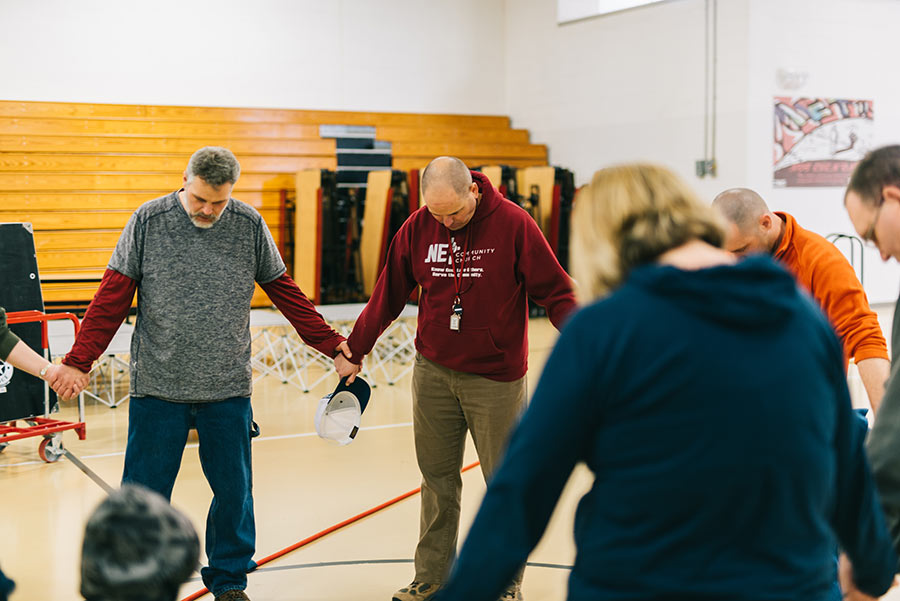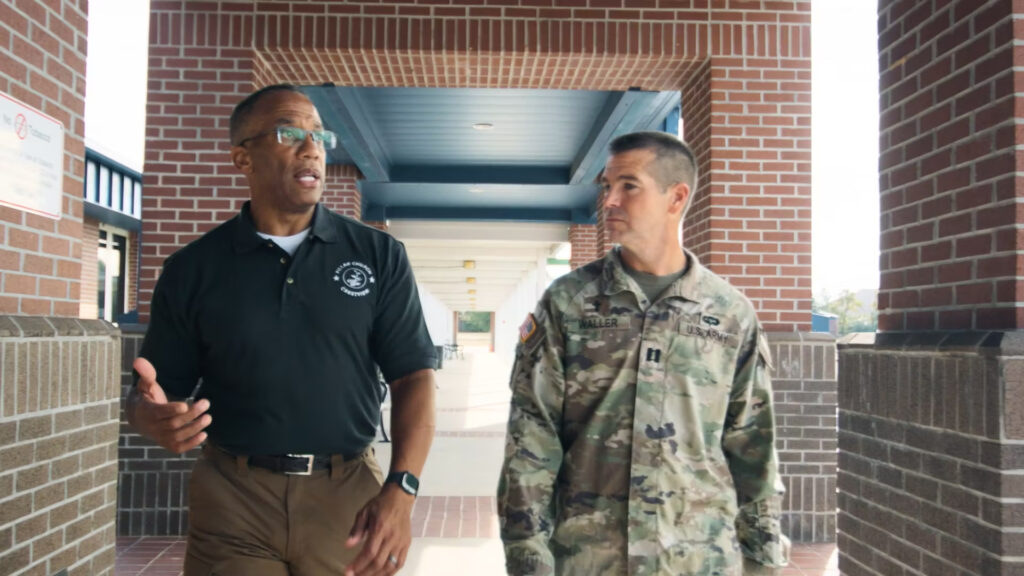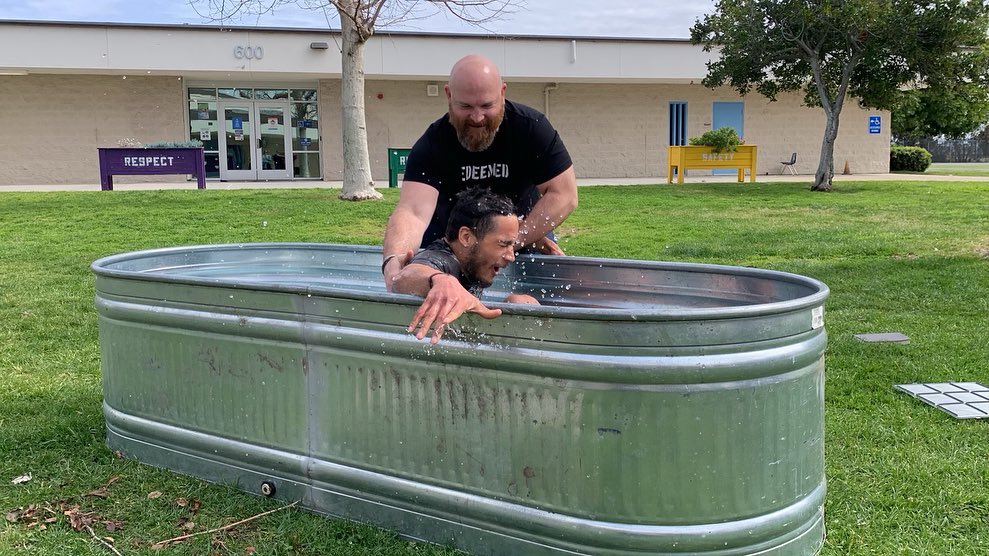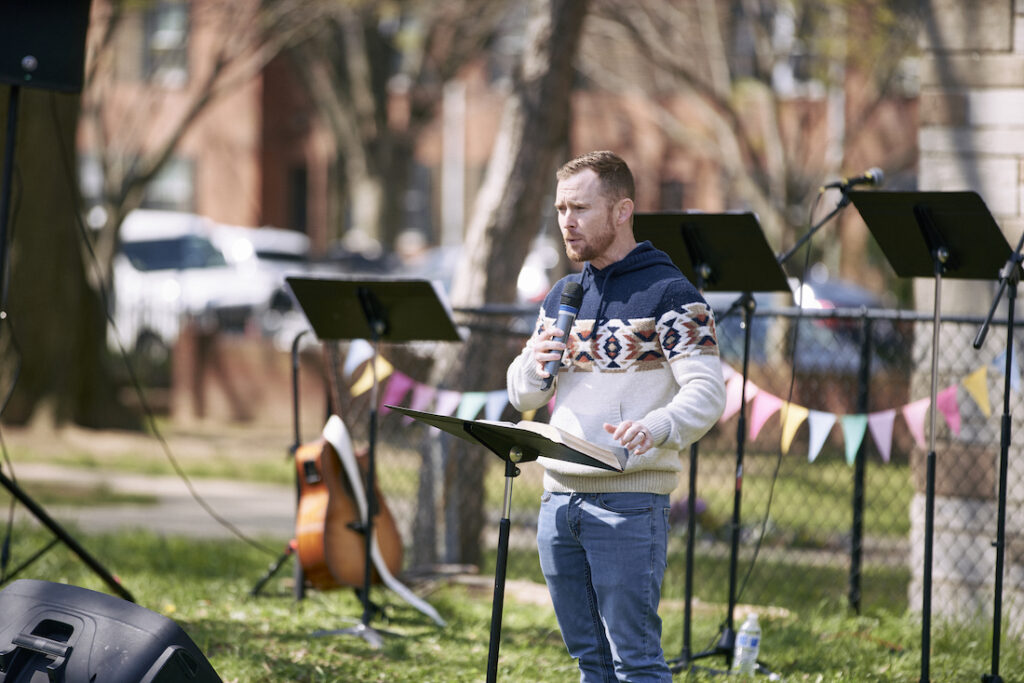In the North American, post-Christian context in which we now live, we can’t plant churches by simply starting a Sunday morning worship gathering. There may have been a day when we could build a cool website, rent a meeting space, send out flyers, put up banners and “launch” a church by starting a Sunday service. But those days are gone, at least in most North American contexts.
What is the alternative? We must begin with missionary activity. Instead of starting with “church” and trying to get to discipleship and mission, we must start with discipleship and mission and work toward church. This is what is meant by the phrase missionary flow. It’s a simple way to think differently about the flow or direction of starting a new church. We need a new framework, a new way to think about planting that doesn’t begin with Sunday.
Take a moment and examine the Missionary Flow graphic below.[I]

Notice the three circles, starting with “Engaging Context,” which moves to “Cultivating Community,” which then moves to “Structuring Congregation.” Let’s consider each of these three circles individually.
Engaging Context
This type of missionary flow begins from scratch. Too often church planters start with Christians from another church or they gather disconnected believers from around a city. This may be well-intentioned and might be better than nothing at all, but in most cases, that is simply starting a church with a church. That is not what we are talking about with missionary flow.
The first phase of any mission must involve contextualization. This begins with an understanding of the local setting, so you can best engage people relationally. It will involve place, prayer, and persons of peace.
Along with understanding the context, we need to remember that we are a sent missionary people. More specifically, it means we need to be reminded that we have already been sent. In other words, we have already been sent into our neighborhoods. We have already been sent to our workplaces. We have already been sent to the social spaces we inhabit each day. We don’t have to wait, wondering where God might send us. Instead, we already live, work and play in these places for a purpose — the purpose of God’s mission.
As a result, we will live out multiple missionary behaviors, including prayer, engaging neighborhoods, workplaces, third places, hospitality, missional discipleship, incarnational evangelism, etc. This is where your church planting efforts need to start. Identify the places and people to whom God has sent you. Incarnate into those places. Pray and listen for what God is doing. Discern how He wants you to participate as you begin to understand, relate to, and connect with people. To repeat an earlier statement: Instead of starting with church and trying to get to discipleship and mission, you must start with discipleship and mission and work toward church.
Cultivating Community
The second circle in the image is titled “Cultivating Community.” The word ‘cultivating’ speaks to the idea of nurturing. When we cultivate soil, we prepare it for planting. We have no power to actually make crops grow, but we can nurture certain conditions that will increase the likelihood for growth. Cultivating community is similar in many ways. We can’t make community happen, but we can create opportunities and environments in which community can flourish.
We use the word ‘community’ to make a distinction from the more customary word ‘church.’ With the phrase “Cultivating Community,” we want you to think about creating time and space for people to connect relationally with you, but also with each other. The key is that this space is not seen as church, but instead is a place where relationships are developed. The missionary phrase for this is social momentum.
Now examine the updated Missionary Flow graphic below. You will notice there are two additional phrases and arrows. Let’s start with the idea of social momentum.

Social Momentum
We have already stated the importance of starting with discipleship and mission when planting a new church in a missionary context. You need to begin by making individual, relational connections with people. The language of social momentum speaks to the need to create alternative spaces for Christians and non-Christians to connect, do life together and build relational equity (or momentum) before they ever consider attending a church program or activity.
The point being that unless you create a consistent, gathering environment — between engaging context and structuring congregation — that people can be invited to and be part of, you will never experience social momentum in your missionary engagement.
Here is another way to think about it. Most church planters are fairly good at engaging context. They work at getting to know their neighbors. They are intentional about making connections in coffee shops or at the gym. They pay careful attention at their workplaces for opportunities to make friends with coworkers. However, if there isn’t an ongoing, somewhat informal, “get-together” for the planter to invite people to, then they will just have lots of good connections that never move beyond being acquaintances.
And for many church planters, after making those connections with new people, they don’t have a clear vision of what to do next relationally. Too often, the only solution for a next step is to start the Sunday morning worship service so they have a church activity to which they can invite new people.
But what do those relational spaces look like? Find something you are already doing, or at least like to do, and develop a consistent rhythm whereby you can easily invite someone to join you. For example, maybe you do a fire pit in your backyard on the first Saturday night of every month. Maybe it is a game night you do in your home once a week or once a month. Sharing meals is always a great idea. You could schedule a neighborhood potluck once a month. The point is that when you have an ongoing relational event that is consistently planned, it is natural to say to someone you connect with at work or in the neighborhood, “Hey, on the first Saturday night of every month we have a group of friends over to roast hot dogs and make s’mores around the fire pit. You know you would always be welcome to join us.”
Creating time and space to develop social momentum will present many opportunities for pre-conversion discipleship and incarnational evangelism. But it will also provide a necessary opportunity for Christians and non-Christians to begin the process of cultivating community within a neighborhood or network.
Spiritual Momentum
Now, back to the Missionary Flow image. The second phrase, with the arrow coming out of the Cultivating Community circle, are the words “Spiritual Momentum.” Similar to the previous idea of developing social momentum, you once again need to think about creating time and space, but in this case it is to provide opportunities for people to grow spiritually.
It may be as simple as gathering to pray for one another. Or to read through the Gospels together. Or perhaps discuss what Scripture has to say to current events. The point is that if you are truly doing life with non-Christians and developing social momentum, there will be those who desire deeper, more meaningful conversations. Again, it should be natural and easy to say to someone that you “have a group of friends that meets once a week to pray for each other and talk about spiritual things.”
Structuring Congregation
Now let’s move to the final circle in the Missionary Flow graphic, which is “Structuring a Congregation.” The point of the last circle is that if you are a church planter, there will come a time when you will begin to form or structure a congregation. There will be particular church issues you will need to consider. You will need to address topics of governance, meeting rhythms, administration, budgets, staffing, etc.
However, let me remind you once again, we are talking about the importance of thinking like a missionary. Church planting is the outworking of mission and community. Or to restate that last sentence with the language of our Missionary Flow image: Structuring a congregation (church planting) is the outworking of engaging context (mission) and cultivating community. Church planting is the point where mission and community intersect. The church is God’s mission strategy. At the heart of God’s plan to bless the nations are the people of God. The church is formed by mission and is formed for mission.
For more on this topic check out Brad’s new book, Covocational Church Planting: Aligning Your Marketplace Calling with the Mission of God published by the Send Network.
[i]Adapted from Hugh Halter and Matt Smay, AND: The Gathered and Scattered Church, Kindle Edition (Zondervan), p. 54.,
Published November 13, 2018




